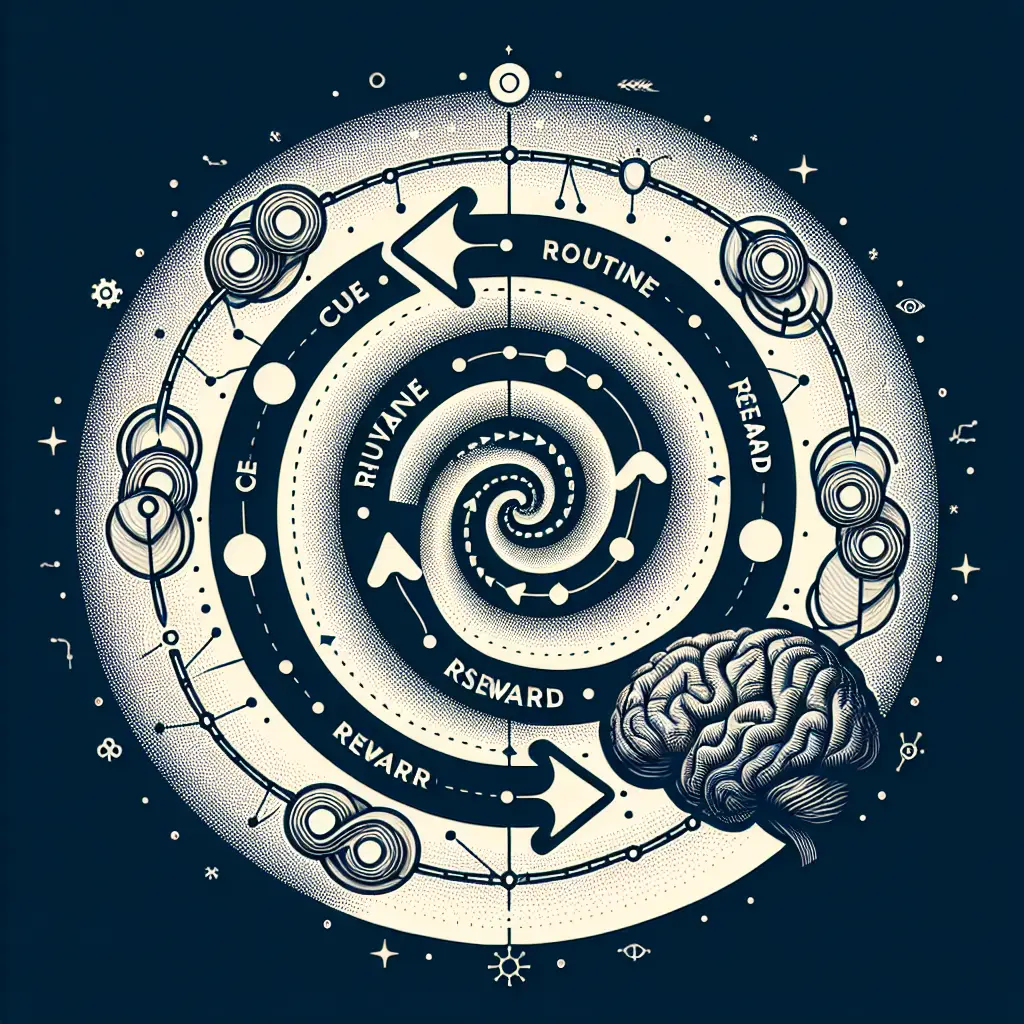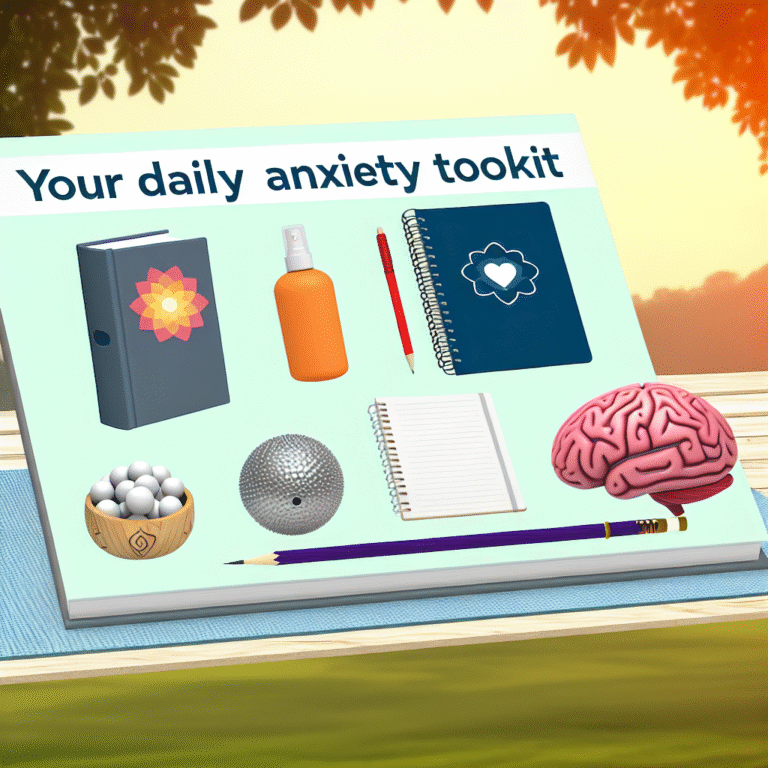
Unpacking the Habit Loop: Behavioral Psychology’s Key to Lasting Change
Introduction
Have you ever wondered why change is so hard, even when we desire it deeply? Picture this: every New Year, millions set resolutions—lose weight, quit smoking, start exercising—but by February, many have abandoned those goals. This cycle speaks to a deeper truth about human behavior. Understanding this cycle is key to achieving sustainable transformation. That truth lies in what behavioral psychology calls the "habit loop." If you’re ready to dive into the mechanics of behavior, you’re in the right place. Unpacking the Habit Loop: Behavioral Psychology’s Key to Lasting Change will provide you with valuable insights to facilitate lasting improvements in your life.
The Habit Loop Explained
The foundation of behavioral psychology is the habit loop, which is composed of three elements: cue, routine, and reward. This simple structure reveals why we do what we do and is essential for anyone looking to modify their habits effectively.
Cue
The cue is the trigger that initiates the habit. It could be anything from a specific time of day to an emotional state. A classic example is a friend texting you to grab coffee, which leads to an automatic routine of heading to your favorite café.
Case Study: The Power of Cues
Take Starbucks as an example. The company mastered the art of cues. The scent of coffee wafting through sidewalks or the ambient sound of a busy café creates a cue for coffee lovers. Understanding these cues can usher in transformative habits—in this case, the habit loop drives sales and reinforces customer loyalty.
Routine
The routine is the behavior that follows the cue. Continuing with the coffee example, the routine might involve getting coffee, engaging in chatter, and savoring that first sip. Here’s where patterns solidify, as routines provide structure to our daily lives.
Analysis of the Routine Component
A well-established routine can be beneficial, but it can also perpetuate negative behaviors. For instance, a person who snacks mindlessly while watching TV doesn’t just drift into unhealthy eating; a series of cues triggers this routine, creating a cycle that’s hard to break. This insight illustrates how powerful routines are in forming habits.
Reward
The final piece of the habit loop is the reward, which reinforces the behavior associated with the cue and routine. In our coffee example, the reward can be the comforting experience of your favorite drink or the social interaction with a friend.
Case Study: Changes Through Rewards
A compelling application is found in the field of fitness. Gym memberships often utilize the reward system by offering incentives for attendance, like points redeemable for prizes. This approach significantly alters behavior and motivates individuals to maintain a workout schedule, showcasing the importance of combining routine with rewards to create lasting change.
The Science Behind Habits: Why We Do What We Do
Understanding the habit loop is just the start. Behavioral psychology delves into the neuroscience of habits, shedding light on why habits form and how we can change them.
The Brain’s Role in Habits
When you repeat a behavior frequently, your brain starts to encode it as a habit, one that requires less energy and thought to perform. The more automatic a habit becomes, the less activation it requires in areas of the brain associated with decision-making.
The Impact of Dopamine
Dopamine, a neurotransmitter, plays a crucial role in the reward segment of our habits. When we receive a reward, dopamine is released, reinforcing the connection between the cue and the routine. This biological mechanism underscores the difficulty of breaking habits; we chase that dopamine hit.
Unpacking the Habit Loop: Steps Towards Lasting Change
Understanding the habit loop sets the stage for lasting change. But how do we leverage this knowledge in our lives? Here are some actionable steps to transform your habits effectively.
Step 1: Identify Your Cues
Take time to examine what triggers your current habits. A simple journal can help you jot down when you perform unwanted behaviors and identify common cues.
Step 2: Change Your Routine
Once you know your cues, brainstorm alternatives to create a new routine. For instance, instead of snacking while watching TV, opt for a healthier snack option or engage in a different activity that requires your focus, like drawing or reading.
Step 3: Reinforce with Rewards
Ensure that your new routine has immediate rewards. For example, after a workout, treat yourself to a favorite smoothie or listen to a podcast. The reward is integral in cementing the new habit.
Step 4: Keep a Diary of Progress
Journaling is a powerful way to track changes over time. Document your efforts, successes, and setbacks. The more data you have, the clearer the patterns will become.
Step 5: Stay Consistent
Quoting Aristotle, “We are what we repeatedly do. Excellence, then, is not an act, but a habit.” Embrace consistency! Lasting change doesn’t happen overnight; commit to your new routine even when motivation wanes.
Step 6: Be Prepared for Setbacks
Understand that setbacks are part of the process. When they occur, analyze them without harsh judgment. Was there a cue that you didn’t expect? Analyze and readjust, but don’t let failure derail your progress.
Creating a Supportive Environment
One of the often-overlooked strategies in Unpacking the Habit Loop: Behavioral Psychology’s Key to Lasting Change is the significance of your environment. Create a supportive space that encourages the habits you want to form.
The Impact of Environment on Behavior
Our surroundings play a major role in the habits we form or break. For instance, if you want to read more, create a cozy reading nook filled with books. Conversely, if you want to cut down on sugar, avoid buying sugary snacks to alleviate temptation.
Case Study: Office Environment
Tech companies often use open-plan offices to increase collaboration. While this setup encourages positive interactions, it can also create distractions. Companies are now recognizing the importance of creating designated quiet spaces where employees can work uninterrupted—demonstrating how structure and environment guide behavior.
Unpacking the Habit Loop with Technology
In our digital age, technology provides tools that can help us refine the habit loop effectively. Apps designed for habit tracking, reminders, and accountability can help keep us on track.
Popular Habit-Tracking Applications
- Habitica: A gamified habit tracking app that turns your goals into a fun game.
- Streaks: Designed for iOS users, this app helps you build good habits by tracking your progress.
- Coach.me: Focuses on accountability and social support by connecting you with other users.
The Role of Mindfulness and Self-Reflection
Incorporating mindfulness practices helps us create a deeper awareness of our habits. With self-reflection, we can observe the habit loop without judgment and make conscious choices about the routines we want to change.
Mindfulness Techniques
Consider practices such as meditative exercises or guided reflections to increase your awareness around your habits. Mindfulness helps you understand your cues at a deeper level, allowing for more intentional change.
Conclusion
Unpacking the Habit Loop: Behavioral Psychology’s Key to Lasting Change unveils essential strategies for transforming behaviors that no longer serve us. By understanding and manipulating the elements of the habit loop, you can forge new paths toward achieving your goals. Whether it’s personal improvement or professional success, understanding your habits equips you with the tools to foster substantial change.
Take Action Today: Choose one habit you wish to change, identify the cue, alter your routine, and bolster it with a reward. Remember, lasting change is a journey, not a destination. Embrace the process, and you may find empower yourself in ways you’ve never imagined possible.
FAQs
1. What is the habit loop?
The habit loop consists of three components: a cue that triggers behavior, a routine that is the behavior itself, and a reward that reinforces that behavior.
2. How can I identify my habits?
You can identify your habits by keeping a journal and recording when you engage in certain behaviors. Note what happens before and after those actions.
3. What strategies can help me change my habits?
A useful approach includes identifying cues, changing routines, reinforcing with rewards, creating a supportive environment, and practicing mindfulness.
4. Are all habits bad?
Not at all! While some habits may be detrimental, many are positive and contribute to our efficiency and well-being. The key is to ensure your habits align with your goals.
5. How long does it take to change a habit?
Studies suggest it can take anywhere from 21 to 66 days to form a new habit, depending on the complexity of the behavior and personal commitment.
By applying the insights from Unpacking the Habit Loop: Behavioral Psychology’s Key to Lasting Change, you can transform not only your habits but your entire approach to personal growth with determination and clarity.













